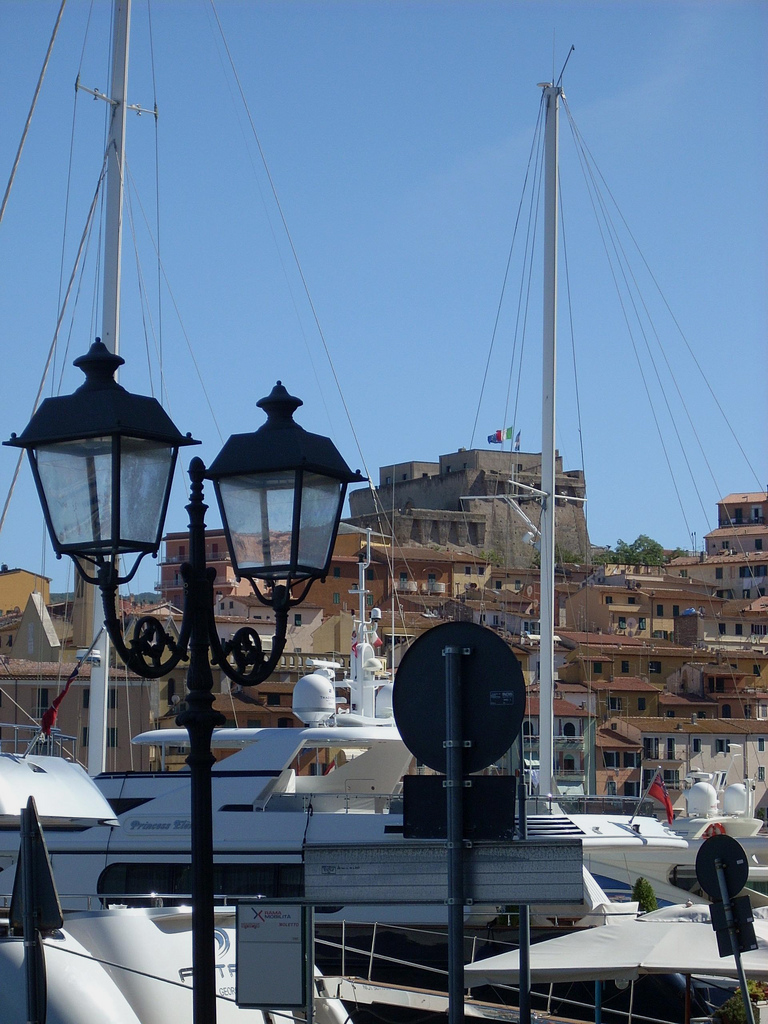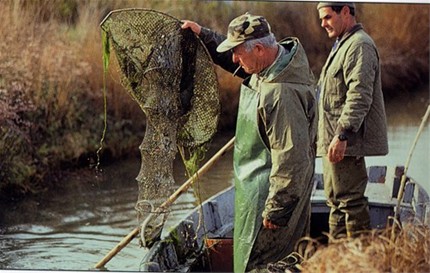Porto Santo StefanoPorto Santo Stefano
 Porto Santo Stefano, definito da molti “la perla dell’Argentario”, si estende su due insenature, Valle e Pilarella, divise da uno sperone chiamaro Croce.
Porto Santo Stefano, definito da molti “la perla dell’Argentario”, si estende su due insenature, Valle e Pilarella, divise da uno sperone chiamaro Croce.
Ville e palazzi risalgono dal mare verso la Panoramica, dove si sviluppa l’ultimo rione, detto la Fortezza per la presenza dell’antico cassero medioevale prima senese e poi spagnolo, ottimamente restaurato e visitabile.
Il pendio è un anfiteatro di case, vigne ed oliveti, ed è rivolto verso il golfo di Punta Madonella.
Il centro abitato inizia con il Porto del Valle, seguito da quello della Pilarella, che in epoca romana costituiva lo scalo da cui salpavano le navi dirette alle ville patrizie del Giglio. Adesso il nuovo Porto del Valle offre buon riparo dai venti di mare che solitamente si abbattono sui porti della costa tirrenica, primo fra tutti il Libeccio, il più irruento e temibile.
D’estate il porto si arricchisce di numerose imbarcazioni di vacanzieri, che si aggiungono alla flottiglia di peschereggi, tra le prime del Tirreno.
Il resto del paese si sviluppò ai primi del Seicento; la costruzione della Fortezza determinò l’immigrazione di pescatori dal meridione e dall’Elba, e l’abitato si estese verso la Punta Madonnella prendendo il nome del patrono. Il Valle è collegato da due strade con il Piazzale dei Rioni, davanti al quale si trova la tranquilla fascia di mare della Pilarella, dove a Ferragosto si svolge il tradizionale palio marinaro, al quale prendono parte tutti e quattro i rioni: Pilarella, Valle, Croce e Fortezza.
La prima delle due strade è il Lungomare dei Navigatori, che segue il perimetro esterno del rione Croce e raggiunge la Pilarella. L’altra via è Corso Umberto, che attraversa poco più a monte lo stesso rione, e che brulica di negozi e ristorantini pittoreschi.
Il Valle si presenta come la zona commerciale ed artigianale, mentre nelle altre contrade si sviluppano maggiormente le attività turistiche.
La strada Panoramica si allontana verso l’alto tra le numerose ville e la Fortezza, costruita nel ‘600, di forma quadrata, con ponte levatoio e muraglia con rinforzi a scarpa in puro stile aragonese e somigliante più ad una torre che ad una vera fortezza. Numerose sono le torri spagnole di avvistamento che circondano la penisola argentarina, silenziose testimoni di una passato militare ed oggi sentinelle delle splendide cale e delle cristalline acque sottostanti.
Alcune di esse sono divenute residenze private, altre, per la loro posizione isolata e scomoda, rimangono disabitate.
Da ricordare la Torre Argentiera, la più antica, che si dice abbia dato il nome all’Argentario stesso: un tempo antica fonderia senese per l’argento, che si narra fosse presente nel promontorio.
Infine immancabile una statua raffigurante il Patrono della cittadina, Santo Stefano, realizzata in terracotta dallo scultore contemporaneo Emilio Greco, situata presso l’altare della chiesa del rione Croce.
Passegiando per Porto Santo Stefano sarete colti dagli odori, i sapori e i colori particolarmente intensi, incantati dalle tante orchidee selvatiche e dalla dorata ginestra.
 Porto Santo Stefano, defined by many as “the pearl of the Argentario”, lies on two inlets, Valle and Pilarella, divided by a spur called Croce.
Porto Santo Stefano, defined by many as “the pearl of the Argentario”, lies on two inlets, Valle and Pilarella, divided by a spur called Croce.
Villas and palaces rise from the sea towards la HGH Panoramica, where the last area of the town rises, called la Fortezza due to the presence of the old medieval fortress which first belonged to Siena and then to Spain.
It has been finely restored and can be visited. The sloping hill is an amphitheatre of houses, vineyards and olive groves, and is turned towards the gulf of Punta Madonella. The town centre starts at Porto del Valle, followed by that of Porto della Pilarella, which in Roman times was the harbour from which ships set sail for the patrician villas of the Isle of Giglio.
Now the new Porto del Valle offers good shelter from the sea winds that usually hit the ports of the Tyrrhenian coast, especially the Libeccio, the most violent and terrible of all. In summer the port is used by numerous holiday boats, which are added to the fleet of fishing boats, one of the largest in the Tyrrhenian Sea.
The rest of the town developed at the beginning of the seventeenth century; the construction of the fortress caused fishermen to come here from the South and from Elba, and the residential area grew towards Punta Madonnella taking the name of the patron saint.
Two roads link the Valle with Piazzale dei Rioni, in front of which lies the calm stretch of sea called the Pilarella, where the traditional sea Palio is held on the 15th August, in which all four quarters take part: Pilarella, Valle, Croce and Fortezza.
The first of the two roads is called Lungomare dei Navigatori and runs along the borders of the Croce quarter to reach Pilarella.
The other road is Corso Umberto which crosses the same quarter a little higher up and is teaming with shops and picturesque restaurants. Valle is the commercial and craft area, while mainly tourist activities are carried out in the other quarters.
The panoramic road goes up into the hills towards the numerous villas and the square Fortress, built in the seventeenth century featuring a drawbridge and walls with escarpments in pure Aragonese style, looking more like a tower than a real and proper fortress.
There are numerous Spanish look-out towers surrounding the peninsula of Argentario, silent witnesses of a military past and today guardians of the splendid coves and the crystal clear water of the sea.
Some of these have become private residences, others, given their isolated and difficult position, are uninhabited. We should mention the Torre Argentiera, the oldest tower that is thought to have given the name Argentario to the peninsula itself: once it was an old Sienese foundry for smelting silver that is thought to have been present on the promontory. Lastly, there is the ever-present statue of the patron Saint of the town, St Stephen, made from terracotta by the contemporary sculptor, Emilio Greco, situated on the altar of the church in the Croce quarter. If you go walking in Porto Santo Stefano you’ll be amazed by the particularly intense fragrances, flavours and colours, and enchanted by the numerous wild orchids and golden juniper trees.

